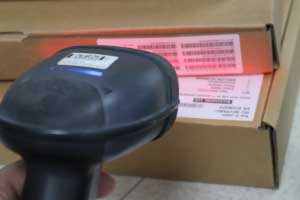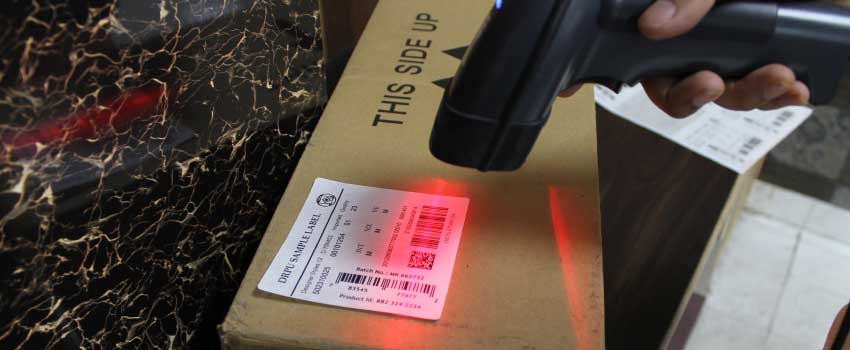Best Practices for Selecting and Implementing Barcode Systems in Banks

There are some best practices for selecting and implementing barcode systems in banks include:
-
Choosing the Right Type of Barcode:
There are different types of barcodes available, each with its own specifications and use cases. It's important to choose the type of barcode that best suits the bank's needs.
-
Conducting a Thorough needs Assessment:
Before selecting a barcode system, it's important to identify the specific needs of the bank, such as the types of documents and items that will be tracked and the required level of accuracy and speed.
-
Selecting the Appropriate Hardware and Software:
Once the type of barcode is chosen, it's important to select the appropriate hardware and software to support the barcode system. This includes barcode scanners, printers, and software for document and inventory management.
-
Regular Maintenance and Calibration:
Barcode systems require regular maintenance and calibration to ensure they continue to operate accurately and efficiently. This includes cleaning scanners and printers, replacing worn-out parts, and calibrating the system as necessary.
-
Training Staff:
Proper training of staff on how to use the barcode system is crucial for its successful implementation. Staff should be trained on how to scan and process barcodes accurately and efficiently, as well as how to handle any issues or errors that may arise.
-
Ensuring Security and Compliance:
Banks handle sensitive financial information and must comply with various regulations and security standards. It's important to ensure that the barcode system chosen meets these requirements and does not compromise the security or confidentiality of customer information.
-
Testing and Monitoring:
Before fully implementing the barcode system, it's important to conduct thorough testing and monitoring to identify and address any potential issues or glitches in the system. This helps to ensure that the system is functioning properly and accurately tracking documents and inventory.
Download Barcode System Software for Bank >>🔒 100% SECURE
Barcode systems can be used to track the location and movement of cash and other assets within a bank. Banks use barcode technology to improve their asset management and reduce the risk of theft or loss.
Each asset, such as a bundle of cash or a valuable item, can be tagged with a unique barcode. The barcode can then be scanned each time the asset is moved or transferred within the bank. By tracking the movement of assets in real-time, banks can ensure that they are being moved to the correct location and that no unauthorized individuals are accessing them.
Barcode systems can also be integrated with other security measures, such as surveillance cameras and access controls, to provide a comprehensive security solution for banks. Additionally, by using barcode technology, banks can improve their auditing processes and quickly identify discrepancies in their asset inventory.
Overall, barcode systems are an effective tool for tracking the location and movement of assets within a bank and can help to improve security, efficiency, and accuracy.
Challenges Associated with Implementing Barcode Systems in Banks
Implementing barcode systems in banks can provide several benefits such as improved efficiency, reduced errors, and enhanced customer service. However, there are some common challenges associated with implementing barcode systems in banks, which include:
-
System Integration:
Barcode systems may need to be integrated with banking systems like core banking or customer relationship management (CRM) systems. To address this issue, it is important to ensure that the barcode system is compatible with the existing systems and integration is seamless.
-
Workflow Integration:
Barcode systems need to be integrated into banking workflows to be more effective. To address this issue and it is important to ensure that the barcode system is designed to fit into banking workflows and that the staff member is trained properly on how to use the system effectively.
-
Security:
Barcode systems can be vulnerable to different security threats such as data breaches, system hacks, virus attacks, or unauthorized access. To address all these issues, it is important to implement security measures such as authentication, encryption, and access control.
-
Compliance:
Various banks are subject to regulatory requirements, and implementing barcode systems can impact compliance. To address this issue and it is important to ensure that the barcode system complies with regulatory requirements.
-
Customer Education:
Customers may be unfamiliar with barcode systems, which can lead to confusion and errors. To address this issue, it is important to educate customers about the barcode system and how to use it.

In summary, implementing barcode systems in banks can provide several benefits but can also be challenging. Addressing these challenges requires a comprehensive approach that involves ensuring barcode quality, system integration, staff training, workflow integration, security, compliance, and customer education.
Cost Implications of Implementing Barcode Systems in Banks
-
Implementing Barcode Systems in banks can have significant cost implications, but the benefits can outweigh the investment in the long term. The initial costs include purchasing barcode scanners, printers, and software, as well as training staff on how to use the new system.
-
The Benefits of Implementing a Barcode System in banks can include improved efficiency, accuracy, and security. Barcode systems can help banks automate processes such as check processing, document tracking, and inventory management. This can lead to increased efficiency, reduced errors, and improved customer service.
-
Barcode Systems can also improve security by enabling banks to track items and documents more effectively. For example, banks can use barcodes to track the movement of cash within the bank, reducing the risk of theft. Barcode systems can also help banks comply with regulatory requirements and improve documentation and record-keeping.
-
While there may be some upfront costs, the benefits of implementing a barcode system in banks can make it a worthwhile investment. By improving efficiency, accuracy, and security, barcode systems can help banks provide better customer service, reduce costs, and stay competitive in a rapidly changing industry.
Regulatory Requirements for Barcode systems used in Banking
Barcodes are widely used in the banking industry for a variety of applications, such as check processing and document management. The regulatory requirements for barcode systems used in banking can vary depending on the country and region where they are being used.
-
In The United States:
The Federal Reserve Board sets standards for barcode systems used in banking through its Check Processing and Collection (CPC) program. The CPC program requires banks to use Magnetic Ink Character Recognition (MICR) technology to encode checks and other payment instruments with the routing and account information needed to process them. The MICR code is a type of barcode that uses magnetic ink to encode characters, and it must meet specific requirements for format and content.
-
In Europe:
the European Central Bank (ECB) sets standards for barcode systems used in banking through its Eurosystem. The Eurosystem requires banks to use barcode technology to process checks and other payment instruments, with the preferred standard being the CMC7 standard. The CMC7 standard is a type of barcode that uses magnetic ink to encode characters, and it must meet specific requirements for format and content.
-
Other Industry Organizations:
The International Organization for Standardization (ISO), also set standards for barcode systems used in banking. ISO has established standards for barcode symbologies, including those used for MICR and CMC7 codes.
Overall, the regulatory requirements for barcode systems used in banking are designed to ensure that checks and other payment instruments are processed efficiently and accurately. These standards are typically set by government agencies, such as the Federal Reserve Board and the European Central Bank, in consultation with industry organizations and other stakeholders.